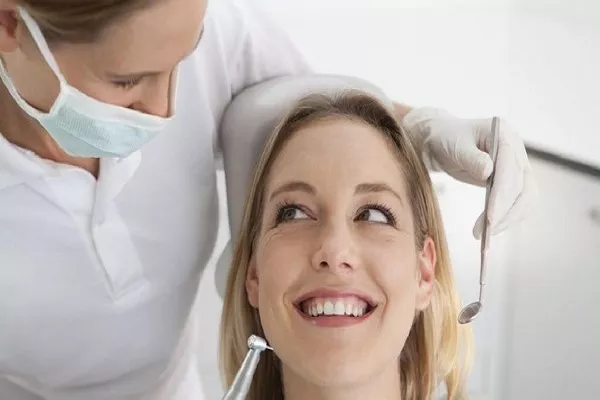Orthodontic braces are an effective way to achieve a beautifully aligned smile, but the journey to straight teeth often involves routine brace tightening appointments. While these adjustments are essential for progress, they can sometimes cause discomfort and soreness. If you or your child are experiencing brace tightening pain, don’t worry; there are several strategies and remedies that can help alleviate this discomfort. In this comprehensive article, we will explore the reasons behind brace tightening pain, practical tips for relief, and how to make the process more comfortable.
Understanding Brace Tightening Pain
Brace tightening, also known as orthodontic adjustment, is a standard part of orthodontic treatment. During these appointments, an orthodontist adjusts the wires and brackets of braces to continue the process of shifting teeth into their desired positions. While these adjustments are crucial for achieving a straight smile, they can lead to various forms of discomfort, including:
Pressure: Brace tightening creates pressure on the teeth and surrounding tissues, stimulating bone remodeling and tooth movement. This pressure can cause soreness and discomfort.
Friction: As wires and brackets are adjusted, they can rub against the cheeks, lips, and tongue, leading to irritation and ulcers.
Muscle Soreness: The change in the position of braces may also lead to muscle soreness in the jaw and face as the mouth adjusts to the new configuration.
Practical Tips for Relief
If you or your child experiences brace tightening pain, consider these practical tips for relief:
Over-the-Counter Pain Relief: Non-prescription pain relievers like ibuprofen or acetaminophen can help alleviate discomfort. Consult with your orthodontist or healthcare provider for appropriate dosage recommendations.
Orthodontic Wax: Orthodontic wax is a soft, pliable material that can be applied to braces to reduce friction and prevent irritation of the cheeks, lips, and tongue.
Cold Compress: Applying a cold compress to the outside of the mouth can help reduce inflammation and numb the area, providing relief from pain and discomfort.
Orthodontic Gel: Some orthodontic gels or creams are designed to relieve sore spots and discomfort caused by braces. These products can be applied directly to the affected areas.
Saltwater Rinse: Gargling with warm saltwater can soothe sore areas and promote healing of any oral sores or ulcers caused by brace irritation.
Soft Diet: Stick to soft, non-irritating foods immediately after brace tightening appointments. Avoid hard, crunchy, or sticky foods that may exacerbate discomfort.
Orthodontic Toothbrush and Interdental Brushes: Specialized toothbrushes and interdental brushes can help clean around braces effectively without causing additional discomfort.
Topical Oral Analgesic: Over-the-counter oral analgesic gels or ointments can provide temporary relief by numbing the area. Consult with your orthodontist before using these products.
Orthodontic Pliers: If a wire is causing severe irritation, orthodontic pliers can be used to gently push or adjust it for more comfort. Contact your orthodontist for guidance before attempting this.
Stay Hydrated: Drinking plenty of water can help maintain oral health and alleviate dryness and discomfort in the mouth.
Comfortable Brace Care
In addition to managing pain, it’s essential to care for your braces and maintain good oral hygiene throughout your orthodontic journey. Here are some tips for comfortable brace care:
Follow Orthodontist’s Instructions: Always follow the instructions provided by your orthodontist regarding brace care and adjustment appointments.
Regular Check-Ups: Attend scheduled orthodontic appointments to ensure that your treatment is progressing as planned and to address any concerns.
Oral Hygiene: Maintain excellent oral hygiene by brushing and flossing your teeth and braces regularly. Use interdental brushes and specialized orthodontic tools to clean hard-to-reach areas.
Dietary Considerations: Avoid foods that can damage braces, such as hard candies, nuts, and sticky snacks. Cut fruits and vegetables into small, manageable pieces.
Wear Orthodontic Appliances: If your orthodontist provides additional appliances like rubber bands or headgear, wear them as instructed to support your treatment progress.
Communication with Your Orthodontist
Open and honest communication with your orthodontist is crucial throughout your treatment. If you experience significant or persistent pain, discomfort, or any issues with your braces, do not hesitate to contact your orthodontic provider. They can provide guidance, make adjustments as needed, and ensure that your orthodontic journey is as comfortable as possible.
Conclusion
Brace tightening is a necessary step in achieving a straight, beautiful smile through orthodontic treatment. While it may cause some discomfort, the tips and relief strategies mentioned in this article can help make the process more manageable. Remember that maintaining good oral hygiene and following your orthodontist’s instructions are essential for a successful treatment outcome. If you have any concerns or questions about your braces or experience significant pain, consult with your orthodontic provider to ensure your comfort and progress throughout your orthodontic journey.
Related Topics:






























